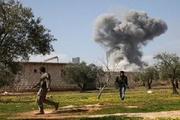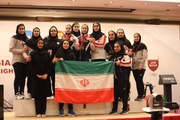Maryam Ramezani, archeaologist and anthropologist told Mehr News local correspondent on Tuesday that a 2-day workshop provided training in bones and ivory structures, exploration and reconstruction of the archaeological items; “the efforts to reconstruct the skull of the women in Burnt City has been an example of the successful site activity; the Burnt City is the largest settlement in the history of eastern Iranian Plateau and the evidence indicates that the settled people enjoyed superb knowledge and civilization,” she told Mehr News.
“The most invaluable item found in a cemetery of the City belongs to 5 millennia ago; the most famous site is Grave 6705 where in 2006, famous women with prosthetic eyes and its frame were found; we draw upon a host of digital as well as manual methods in reconstruction of the women’s sculpture; scanned photos of the skeleton helped in reaching to a frame of reference which itself helped with the 3D printing,” said this anthropologist, who heads the excavation expedition in the Burnt City.
“Setting the thickness of the tissue on the skeleton was a challenge where age, race, gender, nutritional habits, etc., played a part; we draw upon properties of a 30-year-old modern female human with normal characteristics; we then bring all features to the bare bone itself and used anthropological science to come to a near approximation of the ultimate image,” Ramezani detailed with rejoice. “Conditions of life of the ancient times make any approximation to real age a difficult task; we also considered such conditions in reconstruction of our women in the City.”
“We also reached color and the type of woman’s attire according to other found samples in the site; the efforts came up with a makeup approximation and a coiffure in vogue in the ancient city; the necklace is a combination of found samples and reconstructed version,” she went on a precise details of the sculpture which is to show the woman of the Burnt City in entirety.
The most important part of the sculpture, prosthetic eyes, had also been reconstructed according to Ramezani; “our investigations tell us that the prosthetic eye had been white in the past, turning darker and darker over time; so, we attempted to reflect the original conditions of the prosthetic eye in the sculpture, with a second edition reflecting the changes over time,” she added.
“Anthropology and art show a spectacular level of harmony in rendering the sculpture as real as possible; now our sculptor could carve up our women out of any material with breathtaking details; this however, has been possible thanks to the cutting-edge methods of science and archaeology where individual taste of artist may blur the true image in the process of recreation,” said this anthropologist as well as archaeologist.
SH/3724455























Your Comment